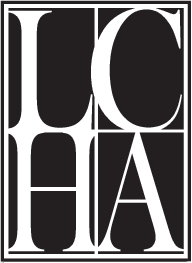Lesson Resources
All the Lesson Resources are complete. No additional research is required by the teacher. Master sheets can be photocopied. Lesson Resources are free. Please send your request to Louise Miller at [email protected].
Art
Hearts and Art
Imagination and vocabulary skills are put to use in this lesson. Students are introduced to three techniques used during the Colonial era for designing greeting cards: pinprick, acrostic, and rebus.
MLR Visual Arts Standards A-1, -3
Designing Your Own Horn-Book
Horn-books were a popular basic teaching tool during the Colonial era. These one page books provided alphabets to be copied, sounds for pronunciation, illustrations for sounding out words, and a reading piece.
This lesson comes with master sheets that allow students to design their own horn-book.
MLR Visual Arts Standards A-1, B-3, C-1, E-1
CCSS Literacy L.4.4, 5.4
English
How Old is That Word?
This exercise highlights 23 words, giving the date at which the word entered the English language and its original meaning (which may be slightly or totally different from today’s definition).
CCSS. ELA-LITERACY L.4.4, 5.4, 6.4
Math
The Colonial Orchard
This lesson combines a mix of history, botany and math skills. Outcomes vary, depending on the style of orchard that is chosen. Students will lean the names of fruits that were popular during the Colonial era.
MLR Social Studies Standard E-1
CCSS.MATH.CONTENT.4.NF B.3, 5.NF.A.2
CCSS MATH.4.MD.A.1, A.2, A.3
Bartering Works When Money is Short
During the Colonial era and well into the 19th century, goods were often purchased through barter (trade of goods and labor) as well as coin or paper money. In this lesson, students are given background information on the currency system of the time and are shown how the shopkeeper set up his account books.
With values taken from a 1750s account book, students are given a list of goods to purchase or barter. They set up a debit and credit page and create an account. they will calculate costs in pounds, shillings, and pence. The debit and credit columns do not have to balance.
MLR Social Studies Standard C-1
CCSS.MATH.CONTENT.4.NBT.A.1, BA
CCSS.MATH.CONTENT.4.MDA.A.I
The Math of Weaving
The students are shown the steps in preparing a loom to weave a blanket, starting with the number of yards of wool yarn that is required. A work sheet with an illustration of the parts of a loom is provided.
CCSS. MATH.CONTENT.4.NBT.A.l, A.3, B.4, B.5, 5.NBT.A.1,B.4
CCSS.MATH.4.MDA.A.l
Social Studies
Native American Names
Many places in our country take their names from Native American words. The lesson includes a mid-18th century map of New England and New York that also shows current state boundaries. A list of places that retain their Native American names is given, along with the meanings of the words. Students are asked to research additional town names taken from Native American words and learn their meanings.
CCSS.ELA-LITERACY.RH.6-8.l, 6-8.3, 6-8.4, 6-8.7
MLR SS Standard E-1, E-2
Trading Across The Ocean
The people who populated the American Colonies were rarely self-sufficient. This resource lists a number of countries that exported goods to the colonies. Another list includes items that the colonies exported. Sailing routes for trading ships are illustrated.
CCSS.ELA-LITERACY.RH.6-8.1, 6-8.3, 6-8.4, 6-8.5, 6-8.7
MLR Standard A-1, C-1, D-2
What to Pack? Advice For Those Traveling to the new World
In 1638 John Josselyn traveled to the Colony of Massachusetts Bay. From his experiences he prepared a list of clothing and provisions that folks planning to move to the New World/New England should consider bringing. This lesson provides an abridged copy of that list. Using the list, students are to consider and discuss why each item was included.
CCSS.ELA-LITERACY.RH.6-8.1, 6-8.3, 6-8.4, 6-8.6, 6-8.7
MLR SS Standard E-1
Greetings to Family & Friends – Letters to and from Lincoln County 1808-1857
This resource contains 18 letters based on regional events and daily life. The letters discussed such topics as: launching of ships, the Embargo Act, happenings at the Pownalborough Count House, importance of local fish. The letters are short, they are to be read by the students, that is each student shares the content of their letter with the class, giving them a type of ownership of the content. From there the material can be discussed and/or used for further study. It is, of course, a valid option for the teacher to use the letters in a manner most suitable to the class’ abilities and interest.
CCSS.ELA-Literacy.SL 4.2, 5.2; CCSS.ELA.Literacy.RH.6-8.2
MLR SS Standard Cl-B, 3-5; D2-A, B, 3-5, 6-8; E1-A, B, 3-5, 6-8.

 Newsletter
Newsletter Join LCHA
Join LCHA Donate Now
Donate Now